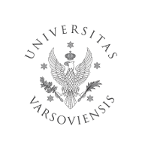| Project Leader: Prof. Konrad Banaszek | Project period: 2018 - 2023 |
| Project funding: FNP Amount of co-financing: 2 986 030,00 PLN |
|
| Project description:
Project aim: To conduct complex research on optical systems at the quantum level with the aim of developing entirely new methods of communication, detection, metrology, imaging, and other practical applications. Quantum optical technologies in WarsawCountries investing today in research on quantum technologies may be in a position to reap enormous social and economic gains within the next decade or so, market analysts predict. Meanwhile, physicists, computer scientists and engineers are working intensively on translating the groundbreaking discoveries made in recent decades in the field of quantum mechanics into practical solutions and products used in everyday life. This is the goal set for the EU’s major programme Quantum Technology Flagship, launching soon. Also fitting into this global trend will be the new research centre established at the University of Warsaw by Prof. Konrad Banaszek, a winner in the International Research Agendas programme of the Foundation for Polish Science. The new centre will focus on quantum optical technologies. The centre’s strategic partner will be the University of Oxford. The research agenda created by Prof. Banaszek proposes to take a very attractive look at quantum physics from the perspective of new technologies. The overriding intention is to conduct complex research on optical systems at the quantum level with the aim of developing entirely new methods of communication, detection, metrology, imaging, and other practical applications. The concept of “optical systems” is understood broadly and includes physical systems which can be prepared, manipulated and measured using light. Such systems include for example atoms, particles, solids, and optomechanical systems, and the range of their potential implementations is very wide. According to Prof. Banaszek, “In conventional approaches, all the essential parameters used have a well-defined macroscopic meaning. In a quantum description, however, the central role is played by quantum states, which contain the complete characteristic of the described physical objects but are not directly accessible. Analysis of traditional methods based on quantum mechanics indicates their bounds of possibility. In many optical technologies, they are known as limitations connected with ‘shot noise’ resulting from the quantum nature of light, whose elementary ‘grains’ are photons. For example, in traditional methods of imaging and microscopy shot noise sets this theoretical limit of precision of the image and limits the possibility for increasing the resolution beyond the boundaries of diffraction. In optical communications, the probability of occurrence of an error for standard systems of coding is defined by the available signal strength. But taking into account the strategies permitted by quantum mechanics, it turns out that the optimal results capable of achievement using the protocols under consideration are much better than would follow from these limitations. The main cause lies in the possibility of preparing, manipulating and detecting quantum systems in a manner exceeding conventional methods based solely on macroscopic dimensions.”
Prof. dr hab. Konrad Banaszek An example of an application of quantum mechanics is innovative measuring methods with capacity and sensitivity unachievable by traditional methods. In the future, quantum sensors may be used for example in geological research (as they provide very precise measures of gradients of a gravitational field) or for monitoring the environment (as they detect trace quantities of chemical substances). Meanwhile, magnetometry using coherently controlled quantum systems, such as colour centres in diamond, could radically simplify medical diagnostics, e.g. based on methods of magnetic resonance. Technologies for quantum communications can at least partially solve the problem of cybersecurity and identity theft on the internet. And advanced methods for illuminating samples and imaging, using quantum effects, can open up entirely new horizons in biomedical research. As Prof. Banaszek stresses, these are just a few practical examples of implementations of quantum engineering, and many more await discovery. Photo: One HD
|
|
|
Quantum Technologies Laboratory |
|




